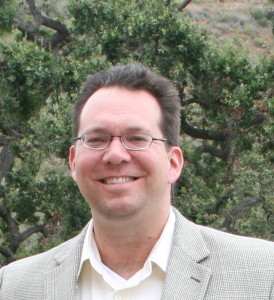By Tim Fish, RN, DNP
At the January 18, 2014 meeting of the Independent Investigations Group, Los Angeles, I gave a presentation on the state of pseudo-science in nursing practice. This topic has been of interest to the IIG organization in the past. In particular, there were previous efforts to work with the California Board of Registered Nursing to improve standards related to the scientific rigor allowed in continuing education programs. These efforts are well documented at the following link:
California Board of Registered Nursing Investigation
I identified three areas for attention to inform and raise awareness about popular pseudo-scientific practices accepted in nursing practice. The regulatory environment, clinical practice, and professional organizations all contribute to the acceptance of nursing interventions not firmly based in evidence. As mentioned, the Board of Registered Nursing contributes from a regulatory perspective and has been well covered by the IIG. This is a brief summary of the state of nursing from a clinical practice and professional organization perspective.
Clinical Practice
According to the American Holistic Nurses Association (AHNA), there are five healing modalities: Whole medical systems, Manipulative and body-based practices, Mind-body medicine, Biologically-based practices, and Energy medicine. Within these practices, specific interventions such as Homeopathy, aromatherapy, therapeutic touch, and prayer are described.1 The AHNA is careful, however, to disclaim that they do not endorse any of the practices specifically, and to advise patients to seek the opinion of a primary healthcare provider. Nurses can use a combination of holistic therapies to deliver healing interventions.
Professional Organizations
There were two organizations highlighted in the discussion, the American Nurses Association (ANA) and the previously mentioned AHNA. According to American Nurse Today, the official periodical of the ANA, their mission states, “…We are committed to delivering authoritative research translated into practical, evidence-based information to keep nurses up-to-date on best practices…” However, of particular distinction, Leah Curtin RN ScD(h) FAAN is the Executive Editor, Professional Outreach for this publication. Dr. Curtin writes often for American Nurse Today and other journals on the topic of Quantum Nursing, Quantum Leadership, and Quantum Relationships. In one article she describes quantum entanglements and its implications in the nurse/patient relationship, concluding that people swap and link consciousness.2 Quantum science and its application in healthcare is currently a popular cultural phenomenon and should not be presented as evidentiary.
The American Holistic Nurses Association maintains that its goal is to improve the healthcare workplace by promoting the incorporation of the concepts of holistic nursing. Through the American Holistic Nurses Credentialing Corporation, the AHNA has also developed an additional method to lend credibility to its members by offering a process to become board certified in Holistic Nursing.3 The American Nurses Association has also endorsed this credential. Requirements for this credential include possessing an unrestricted US RN license, graduation from an accredited nursing school, 2,000 hours of holistic nursing practice within the last five years, and 48 contact hours in Holistic Nursing within the last two years. Candidates also must write a self-reflective essay and pass an exam.4
Nursing practice is moving toward being increasingly evidence based. Advanced technology at the bedside, delivery of more expensive and complex medications, and scrutiny on accurate electronic documentation are influencing the profession. It is critical that nurses, through their clinical practice, professional organizations, and regulatory agencies, fully embrace evidence-based practice and require unproven healthcare interventions to be rigorously researched.5 This will legitimize nursing further and continue to build trust between the nurse and society.
References:
- Descriptions of Healing Modalities. American Holistic Nurses Association. http://www.ahna.org/Home/For-Consumers/Holistic-Modalities
- Curtin, L. Quantum Relationships: Time is not of the essence. American Nurse Today. Nov 2013
- American Holistic Nurses Credentialing Corporation home page. http://www.ahncc.org/
- Certification in Basic Holistic Nursing, HN-BC and HNB-BC. http://www.ahncc.org/certification/holisticnursingbasic.htm
- Fish T. Nursing and Evidence-Based Practice. Rxeconsult, April 21, 2013. http://www.rxeconsult.com/healthcare-articles/Nursing-and-Evidence-Based-Practice-331/
_________________________________________________________________________________________________________
Timothy Fish has been a Registered Nurse for over 20 years with experience in pediatrics, intensive care, and nursing leadership. Currently he is a Director for Medical Affairs within the pharmaceutical industry. He received a nursing degree from California State University, Los Angeles, a Master’s in Business Administration from Pepperdine University, and a Doctor in Nursing Practice from the University of San Francisco focusing on healthcare system leadership. Dr. Fish is also certified in Executive Nursing Practice by the American Organization of Nurse Executives. He has had multiple publications and speaking engagements on topics related to pharmaceutical call centers, medical communication, and nursing practices. Science and religious practices have been a life-long interest.

